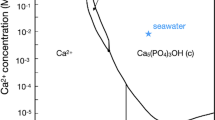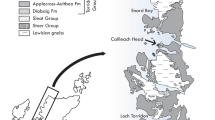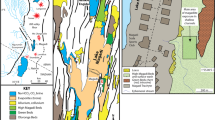Abstract
SOME years ago, Dr. G. M. Lees asked me to examine some 4-in. cores of Permian rock salt from the Eskdale bore hole, N. Yorkshire, of which the stratigraphy has been described1. The specimens were mainly from the Middle Saline Group, 3,900–4,200 ft. The cores had been kept in sealed glass jars and were in good condition for examination. The salt of this zone is mainly stained red or pink by disseminated fine hæmatite, and these iron-rich salts contain the bodies here mentioned, of which a fuller account will be published elsewhere.
This is a preview of subscription content, access via your institution
Access options
Subscribe to this journal
Receive 51 print issues and online access
$199.00 per year
only $3.90 per issue
Buy this article
- Purchase on Springer Link
- Instant access to full article PDF
Prices may be subject to local taxes which are calculated during checkout
Similar content being viewed by others
References
Lees, G. M., and Taitt, A. H., Quart. J. Geol. Soc., 101 (1946).
Author information
Authors and Affiliations
Rights and permissions
About this article
Cite this article
STRONG, M. Possible Protozoan Remains in Permian Salt. Nature 169, 754–755 (1952). https://doi.org/10.1038/169754b0
Issue Date:
DOI: https://doi.org/10.1038/169754b0
Comments
By submitting a comment you agree to abide by our Terms and Community Guidelines. If you find something abusive or that does not comply with our terms or guidelines please flag it as inappropriate.



